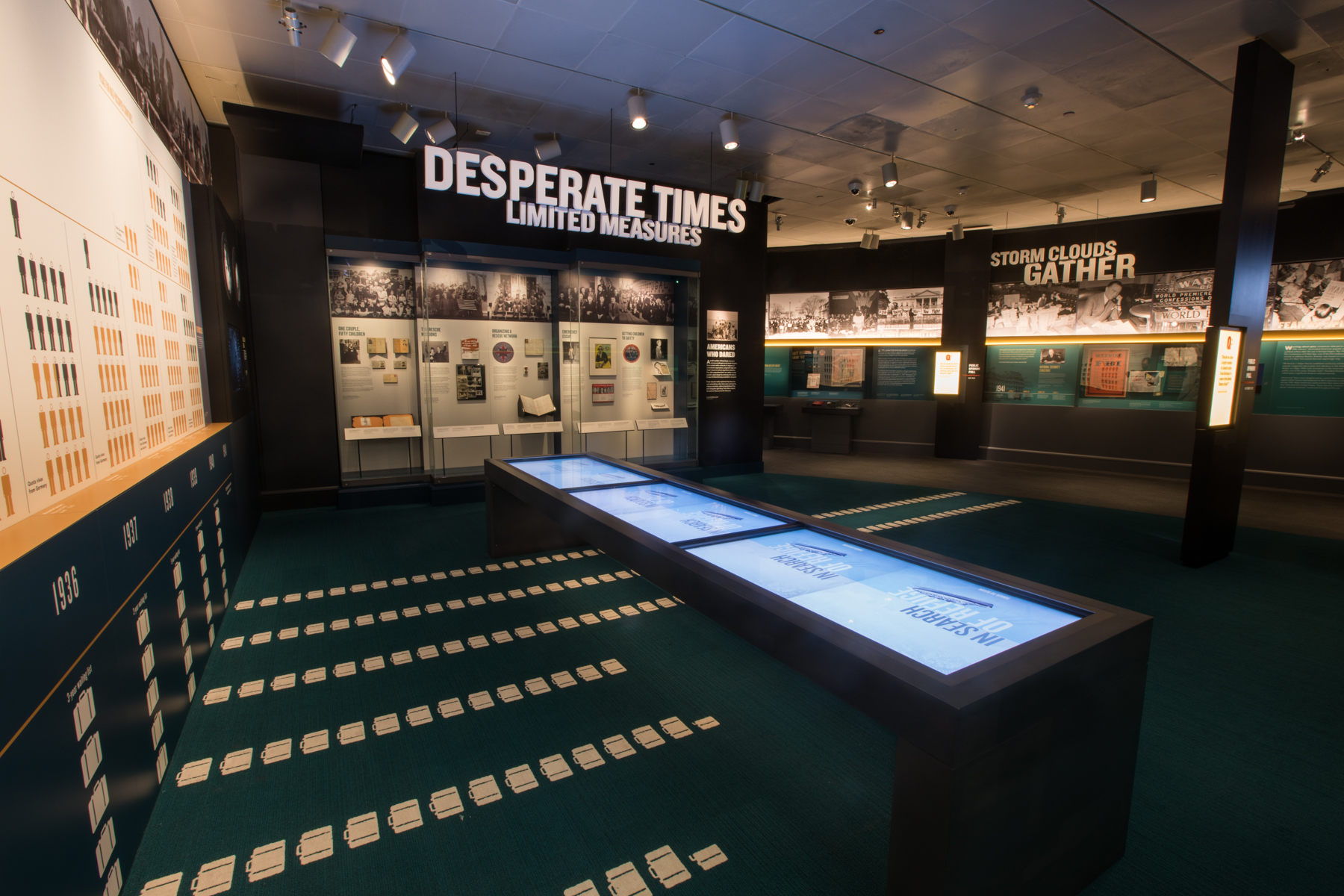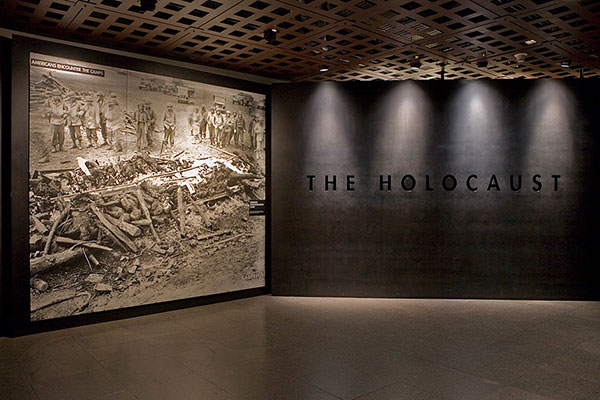The Holocaust was the systematic, state-sponsored persecution and murder of six million Jews by the Nazi regime and its collaborators. Holocaust history raises important questions about what the international community, including the United States, could have done to stop the rise of Nazism in Germany and its assault on Europe’s Jews. Questions include: What did Americans know? How did Americans respond? What more could have been done?
Americans and the Holocaust looks closely at America’s role in this history. The United States alone could not have prevented the Holocaust, but more could have been done to save some of the six million Jews that were killed. This exhibition examines the motives, pressures, and fears that shaped Americans’ responses to Nazism, war, and genocide.
Exhibition Viewing Guide
This guide includes reflection questions to consider while watching the tour and concluding writing prompts.
Exhibition Tour
In this 39-minute tour, Dr. Daniel Greene, US Holocaust Memorial Museum historian and exhibition curator, walks through the Americans and the Holocaust exhibition and provides an overview of the history, themes, and artifacts presented throughout. It was filmed in 2018 for American Artifacts on C-SPAN.
Tour Chapters
Introduction
Fear Itself, 1933–1937
In the 1930s, Americans across the country could read, see, and hear news about Nazi persecution of Jews.
Desperate Times, Limited Measures, 1938–1941
Despite a growing refugee crisis, public opinion polls show that most Americans did not want to accept more immigrants into the country.
Storm Clouds Gather, 1939–1941
The United States remained neutral during the first two years of World War II. Americans debated whether to join the Allied war effort.
America at War, 1942–1945
The United States and other Allied forces prioritized military victory over humanitarian aid during World War II.





